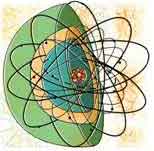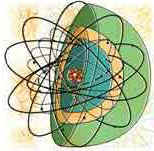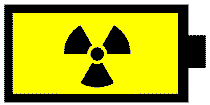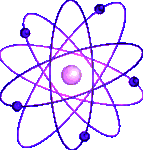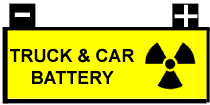|
|
||||||||||||||||||
|---|---|---|---|---|---|---|---|---|---|---|---|---|---|---|---|---|---|---|
The
day of using OIL
GAS
and COAL
... is over!
|
||||||||||||||||||
| Method | Cents/kW-h | Limitations and Externalities |
| Nuclear NAG Currently supplies 0% of the global electricity demand. |
0.5 -2.5 Cents/kW-h |
Fuel for the NAG is plentiful and, since it actually consumes nuclear waste, it creates no additional nuclear waste problems. Direct Energy Conversion From Nuclear Waste. The NAG produces 40 times more power than current thermal nuclear RTG technology @ 3%. Power Conversion Rate of a NAG Atomic Battery @ ~85% efficient depending on isotopes used. Converter size is extremely small and light weight. Fuel Life 3-200 years @ ~ $20.00 per watt unit of isotope. " Note: The NAG is capable of producing power at less cost than gasoline when gasoline is selling for $2.25 per gallon. The
EENAG's are DC Atomic Battery Systems.
They consist of an Atomic Charging Core (Nuclear
Accelerated Generator) and a Lithium Battery that
receives a specific charge over a period of time. They are
safe, pose no health hazard and have no harmful radiation
that can be detected outside the battery. These batteries
can be custom-designed and have a useful power output of several
minutes or hours at their peak power. Potential uses would include
sensors, cell phones, computers or any other electronic equipment
requiring dependable, long-life batteries.
|
| Natural Gas Currently supplies around 15% of the global electricity demand. |
3.9 - 4.4 Cents/kW-h | Gas-fired plants are generally quicker and less expensive to build than coal or nuclear facilities, but a relatively high percentage of the cost/KWh is derived from the cost of the fuel. Due to the current (and projected) upwards trend in gas prices, there is uncertainty concerning the cost / KWh over the lifetime of such plants. Gas burns more cleanly than coal but the gas itself (largely methane) is a potent greenhouse gas. Some energy conversions to calculate your cost of natural gas per kwh. 100 cubic feet (CCF)~ 1 Therm = 100,000 btu ~ 29.3 kwh. |
| Coal Currently supplies around 38% of the global electricity demand. |
4.8 - 5.5 Cents/kW-h | It is increasingly difficult to build new coal plants in the developed world due to environmental requirements governing the plants. There are growing growing concerns about coal-fired plants in the developing world. China, for instance, imposes less environmental overhead, and has large supplies of high sulfur content coal. The supply of coal is plentiful but the coal generation method is perceived to make larger contributions to air pollution than the rest of the methods combined. Coal-fired plants contribute 50 tons of mercury to the environment annually. |
| Nuclear Thermal Currently supplies around 24% of the global electricity demand. |
11.1 - 14.5 Cents/kW-h | There are huge political difficulties in using nuclear energy in some nations and great risk of widespread (and potentially lethal) contamination upon containment failure. Fuel is plentiful, but problematic. Waste disposal remains a significant and growing problem, and de-commissioning plants is costly (averaging approximately US $320M per plant in the US). |
(Communication Power)
(Small Electronics Power)
Questions
(PC
Note-Book Power)
(Larger Electronics Power)
Conversion
Cost Analysis
